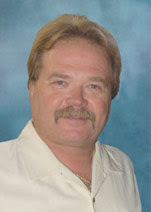Like many PR professionals, I have made a conscious effort in recent years to get on board with social networking. How else can I effectively manage a client’s social media campaign without being one of “them,” the increasing community that communicates largely via 140-character sentences?
I started out on MySpace a couple years ago, but gravitated more toward Facebook and LinkedIn after realizing their more professional, grown-up format. Twitter has the potential to reach a wide audience, as we saw with recent news events as the Presidential Inauguration and the struggle of young Iranian protestors, but requires a lot of up-keep and the right message to gain followers.
Along with these core sites, I participate in other social media by blogging and frequenting several news and political blogs, PR professional blogs and message boards, along with the all-important entertainment scoop sites, providing an occasional comment when I feel I just can’t keep my opinion to myself.
What I have found is that, for the most part, regarding Facebook and Twitter, I pay real attention to a core 20% of my “friends.” For example, a few of my friends are in event planning and public relations. They have, by far, the most interesting “status updates” and “Tweets” because they constantly recommend and mention the best restaurants, hotels and other useful services they come in contact with. I have learned about great New York hot spots, which resorts have the most comfortable beds and websites where I can check out videos of tourist attractions before I visit.
Our clients, current and potential, can gain from this perspective. Many companies want to jump on the social media marketing bandwagon, and I don’t blame them. It’s all anyone is talking about if they are not talking about the downturned economy. But so far, there are specific niches that can use social media as an effective way to raise awareness and drive sales.
It seems obvious, but most of the time, market research may be in order before social media marketing is implemented—the question “is your audience online?” must have a definite answer.
A well-known social media expert said at a seminar I attended recently that the press release will be dead within three years. While that remains to be seen, it’s certainly clear that one-way marketing needs to make room for emerging two-way, user-generated content that has a strong voice and purpose.
Kaitlin Friedmann
Public Relations Manager
kfriedmann@cmasolutions.com







